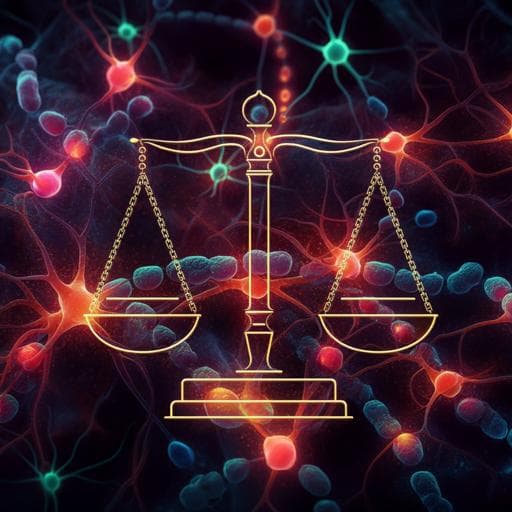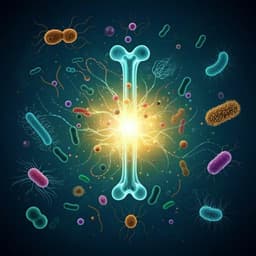
Medicine and Health
Protection against overfeeding-induced weight gain is preserved in obesity but does not require FGF21 or MC4R
C. Lund, P. Ranea-robles, et al.
The study investigates how organisms defend against increases in body weight caused by overfeeding. Body weight and fat mass are under homeostatic regulation and are maintained between upper and lower biological intervention points rather than a single set point. Prior work shows strong physiological defense against weight loss (e.g., increased appetite and reduced energy expenditure), largely driven by reduced leptin during negative energy balance. Conversely, attempts to gain weight via overfeeding also trigger feedback that restores weight after overfeeding stops, but the endocrine mediators are unknown. Parabiosis studies suggest endocrine factors can reduce intake and fat in a partner, but leptin appears negligible in countering chronic overfeeding in mice. It remains unclear whether obesity impairs the recovery from overfeeding and which molecular pathways mediate post-overfeeding hypophagia. This study asks whether obesity alters the homeostatic defense, whether FGF21 or MC4R are required, and what central and circulating changes accompany the response.
The paper situates its research within models of body weight regulation emphasizing dual intervention points and extensive evidence that energy balance is defended against both loss and gain. It summarizes prior findings: dieting triggers increased appetite and reduced energy expenditure; leptin reduction is central in weight regain after weight loss; controlled overfeeding in animals and humans leads to weight recovery after cessation; parabiosis indicates endocrine signals can decrease intake and fat mass in a partner; leptin plays a negligible role in defending against chronic overfeeding in mice. Previous work links FGF21 to weight gain resistance in humans and shows overfeeding can elevate FGF21, though the causal role in overfeeding defense is uncertain. GDF15 has been implicated in energy balance regulation but human studies failed to show increased circulating GDF15 with overfeeding. High-fat diet-induced obesity causes hypothalamic inflammation and hypervascularization, but how the hypothalamus responds to acute overfeeding-induced weight gain is not well defined. Thus, unknown endocrine and central mechanisms likely mediate the hypophagic response to overfeeding.
Design: Automated intragastric overfeeding (ExpOF) in male mice to impose a ~50% energetic surplus (i.e., 150% of baseline requirements), while allowing ad libitum access to chow or high-fat diet (HFD) depending on cohort. Control mice received equal-volume sterile water infusions. Overfeeding lasted 14 days followed by a recovery phase with monitoring until stabilization. Animals: Male C57BL/6J wild-type (WT), diet-induced obese (DIO) C57BL/6J (HFD-fed from 8 weeks), fibroblast growth factor 21 knockout (FGF21 KO), and melanocortin-4 receptor knockout (MC4R KO) mice. Standard housing at 22°C, 12:12 h light-dark; ad libitum water and diet. Surgery: Intragastric catheterization under isoflurane, with analgesia (carprofen, lidocaine). Catheter routed to dorsal neck with vascular access button. Minimum 5-week recovery before overfeeding. Overfeeding procedure: Mice connected to infusion pumps 48 h before start for water pre-infusion at day 0 flow rate. Overfeeding diet: commercial liquid diet (1.5 kcal/mL) supplemented with 20% w/v sucrose to 2.3 kcal/mL (23% fat, 67% carbohydrate, 10% protein); for FGF21 KO cohort, diet without sucrose (1.5 kcal/mL; 35% fat, 50% carbohydrate, 15% protein). Infusion flow rate derived from baseline caloric intake divided by diet caloric density; ramped to deliver 150% of baseline energy by day 9. Mice remained connected 23 h/day. Controls infused sterile water at matched flow rates. Overfeeding terminated at day 14; then low-rate water infusion (100 µL/h) during recovery to minimize stress effects. Cohorts/Studies: Multiple studies quantified body weight, voluntary food intake, adipose and liver histology, plasma metabolites/hormones, targeted plasma proteomics (Olink 92-protein panel), recombinant protein administration (DLL1, LGMN; single 1 mg/kg injection s.c.), open-field behavioral testing after LGMN, hypothalamic RNA-seq (d14 and d14+3), and hypothalamic vascularization via iDISCO whole-brain CD31 staining with light-sheet imaging and 3D quantification in ARC, DMH, VMH. Measurements: Daily body weight; daily total caloric intake (infused + voluntary) and voluntary food intake. Plasma: glucose (glucometer), insulin, leptin, ghrelin, FGF21, GDF15 by ELISA; cholesterol, triglycerides (total glycerol), NEFA by colorimetric assays. Adipose and liver histology (H&E) with adipocyte area quantification. qPCR for thermogenic and metabolic genes in iBAT, iWAT, eWAT, liver, muscle. RNA-seq of hypothalamus (STAR alignment, featureCounts, DESeq2 differential expression; GSEA via clusterProfiler). iDISCO: whole-brain CD31 immunolabeling; light-sheet imaging; vessel segmentation and quantification (vessel length/coverage normalized to area) via atlas registration and TubeMap pipeline in ARC/DMH/VMH. Open field test: locomotion and anxiety-like behavior (distance, center time) after LGMN injection. Statistics: Data as mean ± SEM; one- or two-way ANOVA with post hoc tests as indicated; Welch’s t test where specified; significance at P ≤ 0.05. RNA-seq adjusted for multiple comparisons (DESeq2).
- Overfeeding-induced weight gain and hypophagia in lean mice: Intragastric overfeeding (≈150% energy) for 14 days caused ~28% body weight gain (~8 g) with complete suppression of voluntary chow intake from day 5 onward. After stopping overfeeding, voluntary intake remained suppressed for several days and normalized by ~7 days; body weight returned to baseline within ~7 days.
- DIO mice retain defense against weight gain: DIO mice overfed for 14 days gained ~18% body weight (~8 g) and recovered to baseline by ~6 days post-overfeeding. Voluntary HFD intake was nearly completely suppressed by day ~10 and returned to baseline by ~7 days post-overfeeding. Thus, obesity did not abolish the defense against overfeeding-induced weight gain.
- Metabolic and tissue changes: eWAT adipocyte size increased and hepatic lipid content rose at d14, with changes persisting to d14+3. Plasma triglycerides decreased by ~50% at d14+3; NEFA decreased by ~50% at d14 and remained low at d14+3; total cholesterol increased by ~80% at d14 but normalized by d14+3.
- Hormonal milieu: Overfeeding increased blood glucose, insulin, and leptin (peaking at d14), and decreased ghrelin at d14. Glucose and insulin normalized within 1 day post-overfeeding; leptin normalized by ~3–4 days; ghrelin suppression did not persist at d14+3. Notably, hypophagia persisted beyond normalization of these classical hormones.
- FGF21 response and necessity: Fgf21 mRNA was strongly induced by overfeeding (≈10–15-fold in white fat, ~15-fold in brown fat, ~30–40-fold in liver). Plasma FGF21 rose 9.5-fold at d14 (2315 pg/mL vs 243 pg/mL in controls) and further to ~5000 pg/mL at d14+3. Despite this, FGF21 KO mice showed similar weight gain (~26%, ~7 g), hypophagia, and recovery kinetics (return to baseline by ~7–8 days) as WT, indicating FGF21 is dispensable for defense against overfeeding-induced weight gain.
- GDF15: Marked tissue Gdf15 mRNA induction (notably ~80-fold in IBAT), but no increase in plasma GDF15 at d14 and only slight elevation during recovery; circulating levels far below anorectic thresholds, arguing against a physiological role here.
- Proteomics and candidate factors: Targeted Olink proteomics identified 6 circulating proteins altered by overfeeding (TNFRSF12A, DLL1, IGSF3, EDA2R, LGMN, CRIMI). Recombinant DLL1 (1 mg/kg) had no acute effect on intake or body weight in DIO mice. Recombinant LGMN (1 mg/kg) acutely reduced voluntary food intake and lowered body weight within 24 h in DIO mice without affecting locomotion or anxiety-like behavior in lean mice.
- Adaptive thermogenesis markers: iBAT showed enlarged lipid droplets at d14 and modest, persistent increases in Ucp1 and Dio2 (4.5-fold for Dio2) into recovery; iWAT showed transient increases in Dio2 and Prdm16 but no Ucp1 induction; muscle thermogenesis markers (Ucp3, Sln, Pln) were downregulated. Overall, thermogenic activation appeared modest relative to the profound hypophagia.
- Hypothalamic transcriptional remodeling: RNA-seq revealed 165 DEGs at d14 (74 up, 91 down) and 48 DEGs at d14+3 (4 up, 44 down) with minimal overlap, indicating phase-specific programs. Notable changes included persistent suppression of Npy and reduced Agrp at d14, and increased Stat3 at d14; GSEA indicated enrichment of neuronal development/plasticity pathways and negative enrichment for ribosome biogenesis and oxidative phosphorylation.
- Hypothalamic vascular changes: iDISCO 3D imaging showed small but significant reductions in vessel coverage and length in DMH and VMH at d14 and d14+3, with no change in ARC.
- MC4R is not required: MC4R KO mice gained approximately 26% (~11 g) during overfeeding and suppressed voluntary intake; they recovered body weight more slowly (approaching baseline by ~11–14 days vs 6–7 days in WT/DIO). Overfeeding elevated leptin and reduced ghrelin in MC4R KO. Thus, MC4R signaling modulates recovery speed but is not essential for the hypophagic/weight recovery response.
The findings demonstrate a robust homeostatic response to enforced positive energy balance characterized predominantly by sustained suppression of voluntary food intake. This defense operates effectively in both lean and obese (DIO) mice, indicating that the mechanisms guarding the upper intervention point of body weight remain intact despite obesity-associated hypothalamic and metabolic disturbances. Classical hormones (leptin, insulin, ghrelin) normalize before hypophagia resolves, implying that unknown endocrine or neural signals drive the prolonged post-overfeeding anorexia. FGF21 was dramatically induced by overfeeding at transcript and protein levels, including sustained elevation during recovery, yet genetic deletion of FGF21 did not alter weight gain, hypophagia, or recovery dynamics. Therefore, FGF21 likely serves as a biomarker of overfeeding rather than a necessary effector of the defense. Likewise, although Gdf15 expression increased in tissues, circulating GDF15 changes were minimal and below anorectic levels, arguing against a primary role. Targeted proteomics highlighted LGMN among overfeeding-regulated circulating proteins. Exogenous LGMN acutely reduced intake and body weight in DIO mice without locomotor/anxiety side effects, nominating LGMN or its downstream pathways as potential contributors to energy balance control after overfeeding. Whether endogenous LGMN physiologically mediates the response remains to be established. Central mechanisms contributed: hypothalamic Npy and Agrp (orexigenic) were suppressed during and after overfeeding; neuronal plasticity and bioenergetic pathways were altered; and vascularization decreased in DMH/VMH. MC4R deficiency slowed, but did not prevent, weight recovery, indicating melanocortin signaling shapes recovery kinetics but is not required for the defense. Collectively, the data suggest multiple MC4R-independent hypothalamic pathways integrate with peripheral signals to enforce prolonged hypophagia and restore weight after overfeeding.
This study shows that the physiological defense against overfeeding-induced weight gain is preserved in obesity and is driven primarily by a potent, prolonged suppression of voluntary food intake. Despite marked induction of FGF21 with overfeeding, FGF21 is not required for the hypophagic recovery. MC4R signaling modulates the rate, but is not essential for body weight recovery. Overfeeding induces hypothalamic transcriptional remodeling, persistent suppression of Npy/Agrp, reduced vascularization in DMH/VMH, and modest brown fat thermogenic signatures. Targeted proteomics identified circulating candidates, notably LGMN, which acutely reduces food intake and body weight when administered exogenously in DIO mice. Future directions include: determining whether endogenous LGMN or other factors causally mediate post-overfeeding hypophagia; employing indirect calorimetry and thermogenesis assays to quantify energy expenditure changes; dissecting contributions of specific melanocortin components (e.g., MC3R) and other hypothalamic circuits; and examining diet composition and long-term consequences of overfeeding versus HFD-induced obesity on weight defense mechanisms.
- Species/model: Findings are in male mice; sex differences and human relevance remain to be tested.
- Overfeeding paradigm: Intragastric liquid diet infusion differs from voluntary overconsumption and may engage distinct mechanisms; diet composition varied slightly in the FGF21 KO study.
- Energy expenditure: Adaptive thermogenesis assessments were indirect (histology, gene expression); lack of simultaneous indirect calorimetry limits conclusions on energy expenditure’s role.
- Temporal scope: Analyses focused on d14 and d14+3; additional time points could resolve dynamic phases of central and peripheral responses.
- Mechanistic attribution: While proteomics identified candidates (e.g., LGMN) and pharmacology showed effects, physiological causality of endogenous factors remains unproven; other identified proteins were not functionally tested.
- Melanocortin pathway: Only MC4R was tested; roles of MC3R and upstream/downstream nodes were not dissected.
- Potential confounders: Surgical catheterization and pump tethering may influence stress/behavior, though controls were matched.
Related Publications
Explore these studies to deepen your understanding of the subject.







